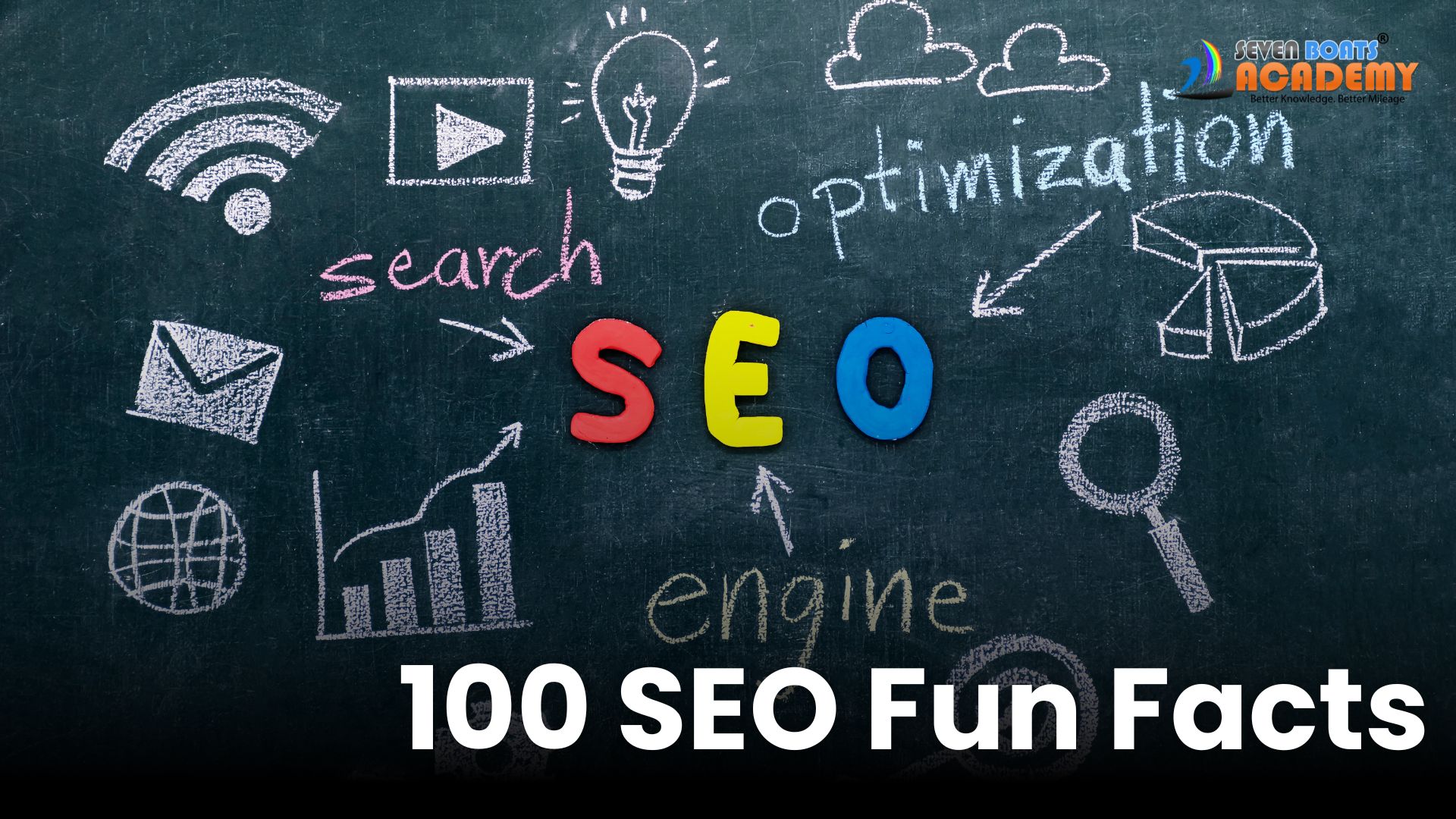
Sure! Here are 100 fun facts about SEO:
- SEO stands for Search Engine Optimization.
- The first Google search ever was “tennis.”
- Google’s original name was “Backrub.”
- Google holds about 92% of the search engine market share.
- The average word count of a Google first page result is 1,447 words.
- 75% of users never scroll past the first page of search results.
- The first 5 organic results account for 67.6% of all clicks.
- Mobile searches make up over half of all searches on Google.
- Google updates its search algorithm hundreds of times a year.
- Voice search is expected to be used in over 50% of searches by 2025.
- 18% of local mobile searches lead to a sale within one day.
- “Near me” searches have increased over 500% in recent years.
- Google processes over 3.5 billion searches per day.
- Google’s search algorithm is called PageRank.
- YouTube is the second largest search engine in the world.
- 93% of online experiences begin with a search engine.
- Organic SEO is about 5.66 times better than paid search ads.
- The first result in Google’s organic search results has an average CTR of 31.7%.
- Longer content (2,000+ words) tends to rank higher in search results.
- 97% of people learn more about a local company online than anywhere else.
- Google’s top-ranking pages have an average age of over two years.
- 61% of marketers say improving SEO and growing their organic presence is their top inbound marketing priority.
- The average click-through rate (CTR) for the top position on a Google search result page is 19.3% for desktop and 27.7% for mobile.
- 58% of searches come from mobile devices.
- Updating old content can increase traffic by over 100%.
- Google accounts for over 75% of global desktop search traffic.
- The first Google Doodle was a Burning Man stick figure.
- The most frequently searched word on Google is “YouTube.”
- Google’s algorithm looks at over 200 factors when ranking websites.
- Local searches lead 50% of mobile users to visit stores within one day.
- Google’s core algorithm is composed of many smaller algorithms.
- Featured snippets appear in 12.3% of search queries.
- Video content is 50 times more likely to drive organic search results than plain text.
- 72% of marketers describe content creation as their most effective SEO tactic.
- 46% of all Google searches are seeking local information.
- “SEO” was first used as a term in 1997.
- Google’s “I’m Feeling Lucky” button was nearly removed in 2010.
- Only 0.78% of Google searchers click on results from the second page.
- Google’s Knowledge Graph understands real-world entities and their relationships.
- The most expensive keyword for Google Ads is “insurance,” with a CPC of around $54.91.
- 90% of searchers haven’t made their mind up about a brand before starting their search.
- SEO leads have a 14.6% close rate, while outbound leads (such as direct mail or print advertising) have a 1.7% close rate.
- 50% of search queries are four words or longer.
- Google has a market cap of over $1 trillion.
- SEO-generated leads have a 14.6% close rate, compared to 1.7% for outbound leads.
- 57% of B2B marketers say that SEO generates more leads than any other marketing initiative.
- Nearly 60% of marketers say that inbound practices (SEO, blog content, etc.) provide the highest quality leads for their sales teams.
- 45% of global shoppers buy online and then pick up in-store.
- “Where to buy” and “near me” mobile queries have grown by over 200% in the past two years.
- Over 40% of revenue is captured by organic traffic.
- Bing was launched by Microsoft in 2009.
- Bing’s video search is powered by YouTube.
- DuckDuckGo is a privacy-focused search engine with over 50 million searches per day.
- Yahoo search is powered by Bing.
- Google Lens allows users to search using images instead of text.
- Google uses a mobile-first indexing approach.
- 55% of teens use voice search daily.
- Google’s first office was a garage.
- Backlinks are a crucial part of Google’s ranking algorithm.
- Googlebot is Google’s web crawling bot.
- A fast-loading site is crucial for SEO.
- HTTPS is a ranking factor in Google’s algorithm.
- 64% of marketers actively invest in search engine optimization.
- 60% of marketers say inbound (SEO, blog content, etc.) is their highest quality source of leads.
- The ideal length for a title tag is around 60 characters.
- Meta descriptions should be under 160 characters.
- The top-ranking page in Google search results has an average of 1,890 words.
- Images should have alt text for better SEO.
- Schema markup helps search engines understand the content of your site.
- 80% of people ignore Google sponsored ads.
- The optimal URL length is 50-60 characters.
- User experience (UX) affects SEO rankings.
- The bounce rate is the percentage of visitors who leave a site after viewing only one page.
- Social signals (likes, shares, comments) can influence SEO.
- SEO results are often seen within 4-6 months.
- There are over 200 different Google ranking factors.
- Content is king in the world of SEO.
- A high-quality backlink comes from a site with high domain authority.
- Google Analytics is a free tool for tracking website performance.
- Keyword stuffing is penalized by search engines.
- The Penguin algorithm targets spammy backlinks.
- The Panda algorithm targets low-quality content.
- Mobile friendliness is a ranking factor.
- RankBrain is Google’s AI algorithm that helps process search results.
- The majority of web traffic goes to the top 3 results in search engines.
- You can improve your SEO by creating high-quality, relevant content.
- SEO is not a one-time task but an ongoing process.
- Long-tail keywords often have higher conversion rates.
- A sitemap helps search engines crawl your site.
- Duplicate content can negatively impact SEO.
- Content that answers users’ questions directly performs well in search results.
- Google’s algorithm favors fresh, regularly updated content.
- Google Trends can help identify popular keywords.
- SEO is one of the most cost-effective marketing strategies.
- Quality content and link building are the two most important signals used by Google to rank your website for search.
- SEO can improve brand awareness.
- 92% of searchers will pick businesses on the first page of local search results.
- Image optimization can improve page speed.
- Tools like Google Search Console provide insights into your site’s SEO performance.
- SEO helps build trust and credibility with your audience.
I hope you found these SEO facts interesting!



0 responses on "100 SEO Fun Facts"